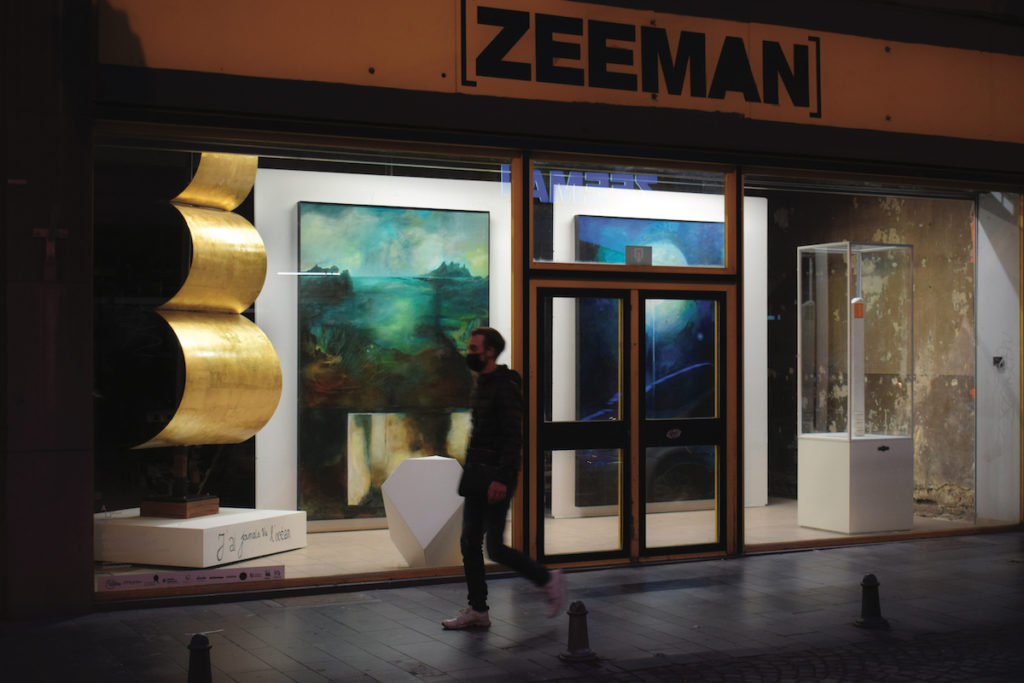-
The price is worth it
Acher
Boulevard d'Avroy 28-30
-
TO DO
Hilal Aydoğdu
100 Rue Saint-Gilles
-
V – 150360/1 p. 204, 265, 266
Dóra Benyó
1 Féronstrée
-
Fausse bonne nouvelle
Juan d’Oultremont
31b Rue de la Cathédrale
-
Et fouisse toujours on trouvera bien
Gaspard Husson
18 Rue de l'Etuve
-
La constellation du navire Argo
Sarah Illouz & Marius Escande
Hôtel de la Cour de Londres 40 Rue Hors-Château
-
One Line (… Better Than On – line!)
Marin Kasimir
31a Rue de la Cathédrale
-
Cityscape
Sarah Lauwers
29 Rue de l'Université
-
Traversées
Alexiane Le Roy
3 Rue de la Cathédrale
-
Mécanique d’un mur
Raphaël Maman
9 Passage Lemonnier
-
Vapeurs
Eva Mancuso
5 Rue Chéravoie
-
Don’t cry over spilllllled tears anymore
Francisca Markus
7 Rue Saint-Remy
-
Actions !
Maxence Mathieu
56 Rue Saint-Gilles
-
On ne peut rien faire d’autre que tenir debout
Élodie Merland
113 Rue de la Cathédrale
-
Travel Local, Buy Local
Oya
107 Féronstrée
-
Le vestiaire
Camille Peyré
85 Rue de la Cathédrale
-
22 empans et 1 palme
Leïla Pile
75 Rue Hors-Château
-
Chronique florale
Ionut Popa
101 Féronstrée
-
The Sunken Place
Louise Rauschenbach
4 Rue de la Cathédrale
-
Le temps d’une trace / La trace du temps
Florian Schaff Marvyn Brusson
1 Rue Courtois
-
Open closet archive 1995/2021/2023/2024
Bo Stokkermans
Passage Lemonnier, 37-39
-
Mutations x Urbaines
Adrien Mans Benjamin Ooms
17 Rue des Croisiers
-
Je m’organise…
Leen Vandierendonck
159 Féronstrée
-
Wer rettet die Welt
Paul Waak
16 Rue du Palais
-
Regarde… ce qu’il se passe à côté
Sculpture/Peinture B3 ESA Liège Melissa Andreia Alves ...
137-139 Féronstrée
-
Pauvre petit belge qui tremble
Paolo Gasparotto
25 Rue Saint Paul
Warning: Undefined array key "current_expo" in /var/www/clients/client3/web4/web/wp-content/themes/artaucentre/loop/vitrine.php on line 25

NAPOLÉON
#6
Tim Volckaert
Curator: Sandrine Bouillon
14620 Rue de l'Université
The connection between humans and the landscape is a central theme that binds Tim Volckaert’s actions, drawings, sculptures, installations, photographs and paintings. How do humans identify with their environment ? In a recent series of paintings, the artist analyzed typical portraits of conceited bourgeois painted in front of a scenery whose main function is to highlight their opulence. In the past already, he had deconstructed and corrected this duality in strange paintings showing a harmonious fusion between foreground and background, humans and landscape. In his last artworks, Tim Volckaert further reflects on the way power structures – humans facing their environment, but also human beings among themselves – are visible in history.
The creation of similar portraits as of the Renaissance goes hand in hand with a growing desire of expansion and world conquest by European powers. In these paintings, the artists added numerous symbolic references to the masculinity of the figures. Let’s think for example of the famous Bonaparte crossing the Great Saint Bernard by Jacques-Louis David (1801). Napoleon mounts a reared-up horse, his finger pointing up, sign that he can also conquer the sky. Moreover, in such majestic portraits, the male genitals – although covered – are usually dramatically represented. In his Napoleon, Tim Volckaert focuses on one of these bulging and figure-hugging trousers to draw our attention to a caustic truth : the history (of art), and by extension the world, significantly follows the model of the heterosexual man.

